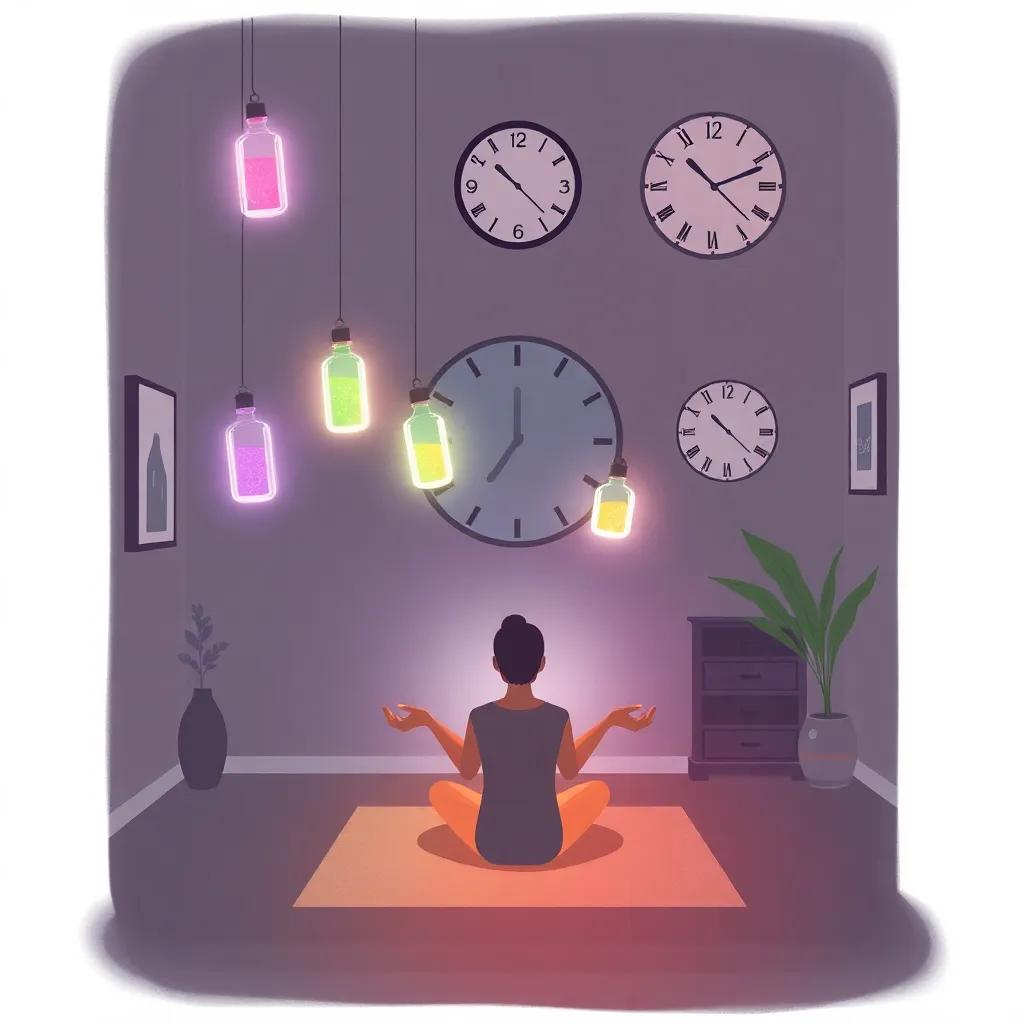Explore the science of chrono-aromatherapy, focusing on how timing essential oil use can amplify benefits for mental clarity and emotional health, supported by recent research.
Discover how the timing of essential oil use, aligned with your body’s circadian rhythms, can enhance mental clarity and emotional well-being through chrono-aromatherapy.
Introduction to Aromatherapy and Its Historical Roots
Aromatherapy, the practice of using essential oils for therapeutic benefits, has a rich history dating back thousands of years. Ancient civilizations such as the Egyptians, Greeks, and Chinese utilized aromatic plants for their healing properties. Modern aromatherapy, however, has evolved to incorporate scientific understanding, particularly in how essential oils interact with the body’s physiological processes.
The Concept of Chrono-Aromatherapy
Chrono-aromatherapy is an emerging field that combines the principles of aromatherapy with chronobiology, the study of biological rhythms. According to Dr. Jane Buckle, a leading expert in clinical aromatherapy, the timing of essential oil application can significantly influence their effectiveness, as the body’s absorption and response to these oils vary throughout the day
(Buckle, 2015).
Circadian Rhythms and Essential Oils
Circadian rhythms, the natural 24-hour cycles that regulate various bodily functions, play a crucial role in chrono-aromatherapy. Research published in the Journal of Biological Rhythms highlights that the body’s sensitivity to olfactory stimuli fluctuates with these rhythms, affecting how we perceive and benefit from essential oils (Smolensky et al., 2015).
Optimal Times for Specific Essential Oils
Different essential oils are more effective at specific times of the day. For instance, peppermint oil, known for its invigorating properties, is best used in the morning to enhance alertness and focus. Lavender oil, with its calming effects, is ideal for evening use to promote relaxation and sleep. Bergamot oil, which has mood-lifting properties, can be used during the day to alleviate stress and anxiety.
The Role of Olfactory Receptors and the Limbic System
The olfactory system, responsible for our sense of smell, is directly connected to the limbic system, which governs emotions and memory. A study in Frontiers in Behavioral Neuroscience found that certain aromas can trigger emotional and physiological responses by activating specific neural pathways (Herz, 2009). This connection underscores the potential of chrono-aromatherapy to influence mental and emotional well-being.
Practical Tips for Integrating Chrono-Aromatherapy into Daily Life
To maximize the benefits of chrono-aromatherapy, consider incorporating essential oils into your daily routine. Use invigorating scents like peppermint or eucalyptus in the morning to kickstart your day. During the afternoon, opt for uplifting oils such as bergamot or citrus blends to maintain focus and energy. In the evening, switch to calming oils like lavender or chamomile to unwind and prepare for restful sleep.
Importance of Quality and Purity in Essential Oils
The efficacy of chrono-aromatherapy heavily depends on the quality and purity of the essential oils used. According to the National Association for Holistic Aromatherapy (NAHA), only pure, therapeutic-grade essential oils should be used for aromatherapy to ensure safety and effectiveness
(NAHA, 2020). Always source oils from reputable suppliers and check for certifications.
Conclusion and Future Research
Chrono-aromatherapy offers a promising approach to enhancing mental clarity and emotional well-being by aligning essential oil use with the body’s natural rhythms. While current research provides a solid foundation, further studies are needed to explore the full potential of this practice. As Dr. Buckle notes, the integration of chronobiology and aromatherapy could revolutionize how we approach mental and emotional health
(Buckle, 2015).




